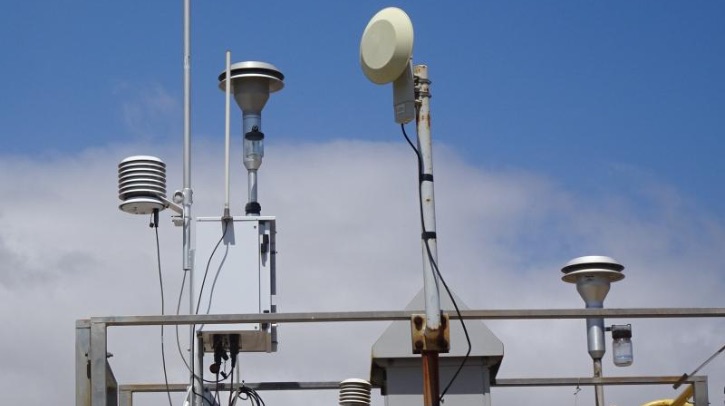According to a report by IMARC Group, titled ‘Air Quality Monitoring Market Report by Product Type and Region 2025-2033‘, the air quality monitoring market, worth US$5.2bn in 2024, will reach US$9.5bn by 2033, exhibiting a growth rate (CAGR) of 6.18% during the period 2025 to 2033. The report also includes competitor and regional analysis, along with a breakdown of segments within the industry.
The growing pace of urbanization and industrialization, increasing public awareness about the harmful impacts of pollution on health, and incorporation of internet of things (IoT) and artificial intelligence (AI) in air monitoring systems to improve functionality are some of the factors reportedly impelling the market growth.
Market growth factors
The air quality monitoring market is undergoing rapid transformation, driven by technological innovation and the integration of digital solutions that significantly enhance the accuracy, reliability and accessibility of air quality data. Traditional monitoring systems are being supplanted by advanced sensors, IoT-enabled devices and cloud-based platforms which enable real-time data collection, analysis and sharing across diverse environments. Machine learning and deep learning algorithms are now being deployed to process vast datasets, uncovering complex patterns and trends that were previously undetectable, thereby improving predictive analytics and operational efficiency.
Furthermore, the integration of air quality monitoring systems with smart city infrastructures and building automation technologies is revolutionizing urban planning and environmental governance, enabling authorities to implement targeted interventions and track the effectiveness of pollution control measures. As governments worldwide enact stricter air quality standards and mandate real-time reporting, the adoption of these advanced monitoring solutions is expected to accelerate, particularly in regions grappling with rapid industrialization and urbanization. The convergence of technology, regulatory frameworks and public health imperatives is driving robust market expansion, with analysts projecting sustained double-digit growth rates in the coming years as stakeholders across sectors recognize the value of data-driven environmental management.
Regulatory mandates and public health initiatives
The research found that the market’s growth is underpinned by a surge in regulatory mandates and heightened public awareness of the health risks associated with air pollution. Governments and regulatory bodies, including the US Environmental Protection Agency, the European Environment Agency and India’s Central Pollution Control Board, are implementing stringent air quality standards and requiring real-time monitoring and reporting across industrial, urban and residential environments. These regulatory requirements are driving widespread adoption of air quality monitoring systems, as organizations seek to ensure compliance, mitigate legal risks and demonstrate corporate responsibility.
Concurrently, it highlighted that public health initiatives and awareness campaigns are raising the profile of air quality as a critical determinant of community well-being, particularly in light of rising incidences of respiratory and cardiovascular diseases linked to poor air quality. The Covid-19 pandemic further underscored the importance of indoor air quality, prompting businesses, schools and healthcare facilities to invest in monitoring solutions to safeguard occupants and maintain productivity. The growing emphasis on workplace safety, healthy living environments and sustainable building practices is fueling demand for both indoor and outdoor air quality monitoring systems. Moreover, the rise of smart cities and green building certifications, such as LEED, is amplifying the need for comprehensive air quality management solutions that integrate seamlessly with broader environmental and urban development strategies. As regulatory landscapes evolve and public expectations for transparency and accountability increase, the air quality monitoring market is poised for sustained expansion, with robust demand anticipated across both developed and emerging economies.
Urbanization, industrialization and smart city initiatives
The report also found that the air quality monitoring market is being propelled forward by the dual forces of rapid urbanization and industrialization, particularly in the Asia Pacific and Latin America regions, where air pollution levels are among the highest in the world. The proliferation of industrial activities, vehicular emissions and construction projects in urban centers has led to deteriorating air quality, prompting governments and municipalities to prioritize air pollution monitoring and control as a public health imperative.
Additionally, the report found the growing adoption of portable and wearable monitoring devices to be empowering individuals to track their personal exposure to air pollution, fostering a culture of environmental stewardship and informed decision-making. The market is also benefiting from increased public-private partnerships and collaborative funding models, which are facilitating the development and deployment of innovative monitoring solutions in both developed and developing regions. As urbanization and industrialization continue to accelerate, the demand for comprehensive, scalable and technologically advanced air quality monitoring systems is expected to surge, positioning the market for robust and sustained growth in the years ahead.
For more of the top insights into the future of air quality monitoring, read MTI’s exclusive feature ‘How are the latest air pollution models closing coverage gaps to save lives?’



